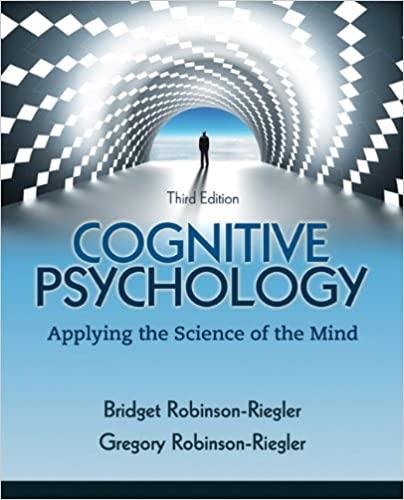Question
Compare and contrast three different therapies for this case study below: Case Introduction The client, JB, was a 46-year-old White male and divorced at the
Compare and contrast three different therapies for this case study below:
Case Introduction
The client, JB, was a 46-year-old White male and divorced at the time of the current treatment episode. The client was assessed approximately 5 days after he entered a residential substance abuse treatment program, and he remained in the treatment program throughout the course of therapy. Prior to his residential treatment admission, JB had been arrested 2 times for driving under the influence. He was admitted to substance abuse treatment as a condition of probation. However, his involvement in this treatment was completely voluntary and not a requirement of his substance abuse treatment program.
Presenting Problems
At the time of the initial assessment, the client met full criteria for major depression, alcohol dependence, and PTSD. His PTSD symptoms included intrusive recollections, distress in response to reminders, physical reactions to reminders, persistent avoidance of reminders, feeling detached from others, feeling emotionally numb, problems with irritability and anger, and being overly alert.
History
JB reported that approximately 20 years ago, he was married with two children below the age of 6, and employed as a first responder. He and his wife were struggling financially: his wife stayed home with the children, and his ability to provide for the family was a considerable source of tension in the relationship. Although he was able to earn enough money to provide basic necessities for his family, he was very unhappy with his current employment, and had increasingly voiced a desire to start his own business. As this would be a considerable financial risk, his wife had serious concerns about it. When his wife became pregnant with their third child, she expressed ambivalence about continuing the pregnancy. She expressed fears that he would neither be able to maintain his current job, given his dissatisfaction, nor succeed if he went into business on his own. She had discussed the possibility of an abortion with her older sister prior to talking to the client, and her sister was in support of her having an abortion and encouraged her to do so. JB did not wish to terminate the pregnancy, so, as an initial compromise, the two of them attended a counseling session. He recalled being told that the decision about whether to have the baby rested fully with his wife, which was upsetting to him. However, following this, after a long and difficult conversation, JB and his wife agreed that they would make the best of the situation and have the baby. The next day, his wife's sister took her to have the abortion, and she went through with the procedure. She then told the client when he returned from work the following day. He reported feeling shocked, helpless, and numb initially. She told him that she would not bring another child into the world if she could not feel confident that he could provide for it, and she blamed him for the pregnancy. He withdrew from the conversation and sat alone, ruminating about the situation, and imagining what the unborn child would have been like.
In the subsequent weeks, JB withdrew socially, began taking additional shifts at work, and began drinking more to help him avoid thinking about the abortion and experiencing associated feelings of inadequacy. He also began avoiding work assignments that might involve pregnant women. As his drinking became more problematic and he continued to withdraw from relationships, including avoiding his wife, their relationship deteriorated, eventually leading to divorce. Several years passed before he sought treatment for alcohol dependence and major depressive disorder, which he had been diagnosed with prior to the current treatment episode. The client had previously been employed as a first responder for 15 years and had also served in the military. In these jobs, he had witnessed several potentially traumatic events, but his ex-wife's abortion was the event that continued to cause him substantial distress.
Step by Step Solution
There are 3 Steps involved in it
Step: 1

Get Instant Access to Expert-Tailored Solutions
See step-by-step solutions with expert insights and AI powered tools for academic success
Step: 2

Step: 3

Ace Your Homework with AI
Get the answers you need in no time with our AI-driven, step-by-step assistance
Get Started


